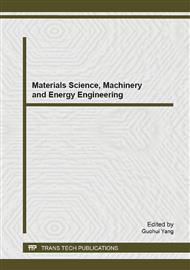p.243
p.249
p.253
p.260
p.264
p.270
p.276
p.282
p.291
Heat Treated and As-Plated Electroless Duplex Ni-P/Ni-B Coatings: Evaluation of Hardness and Wear Resistance
Abstract:
The present work deals with the formation of NiP/NiB duplex coatings by electroless plating and evaluation of their hardness and wear resistance. The duplex coatings were prepared with Ni-P as the inner layer. To analyze the structure of the coatings, XRD analysis was carried out. According to the results, NiP and NiB coatings are amorphous in their as-plated condition and after applying heat-treatment at 450 °C for 1 h, both NiP and NiB coatings crystallize and produce nickel, nickel phosphide and nickel borides in the coatings. To determine the surface morphology and cross-section characteristics of the coatings, SEM observations were carried out and concluded that duplex coatings are uniform and good coherent exists between the duplex layers and the coatings are also connected closely to the substrate. The hardness of electroless nickel duplex coatings increased with applying heat treatment and reached maximum value at coatings annealed at 400 °C. To analyze the tribological properties, pin-on-disc tests were carried out. The wear track patterns on the coatings and on Al2O3 balls were then examined by optical microscopy and EDS. The friction coefficient and wear rate of the coatings were lower than the substrate steel. Friction coefficient decreased from 0.43 to 0.36 and wear resistance decreased from 11.3 to 6.4 by applying heat treatment at 450 °C for 1 h to duplex coatings.
Info:
Periodical:
Pages:
264-269
Citation:
Online since:
December 2013
Authors:
Keywords:
Price:
Сopyright:
© 2014 Trans Tech Publications Ltd. All Rights Reserved
Share:
Citation:


